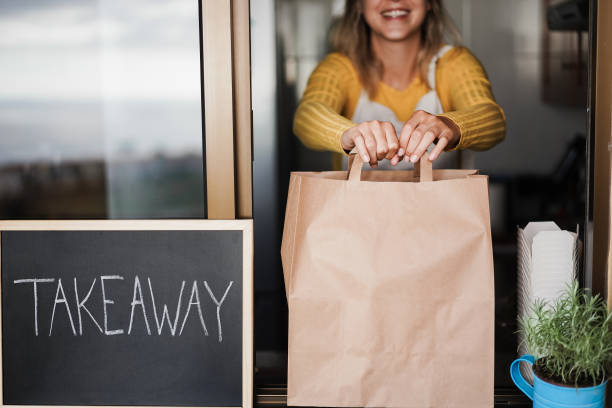So You Run a Ghost Kitchen—But Who’s Watching the Books?
Running a ghost kitchen might feel like playing restaurant on “easy mode”—no front of house, no expensive leases, just food and hustle. But once the excitement simmers down, you’re left with a big question: Is the back office as lean as the kitchen line?
Honestly, this is where most virtual restaurants hit a wall. Because even if your wings are the best on Uber Eats and your tacos trend every Tuesday, all of it starts to fall apart if your numbers don’t make sense. Let’s talk accounting, tax, and the behind-the-scenes work that can make or break your operation.
The Real Cost of Being “Lean and Agile”
Here’s the thing—ghost kitchens thrive on low overhead. But what’s often overlooked is that traditional accounting methods don’t always fit non-traditional models.
You’ve got:
-
Third-party delivery fees slicing up your margins
-
Multiple platforms funneling revenue in uneven waves
-
No in-person POS, but plenty of microtransactions
-
Inventory turnover that can get messy real fast
Using cash-based accounting? That might work for your cousin’s food truck, but not for a fast-scaling ghost kitchen juggling DoorDash, Grubhub, and Shopify at once.
Accrual-based accounting offers a clearer picture of where your business stands—matching revenue to when it’s earned and expenses to when they’re incurred. That’s key when reconciling a weekend’s worth of orders with ingredients bought a week ago and delivery fees taken out after the fact.
Delivery App Revenues: A Maze of Micro Fees and Delayed Payouts
Let’s talk about the apps. They may bring in the volume, but they also introduce financial complexity. Each service has its own payout schedule, fee structure, and chargeback policies.
Think you’re making $12 on that burger combo? After platform fees, taxes, and promo discounts, you might be looking at closer to $8.25—and that’s before ingredients, labor, and overhead.
That’s why proper categorization of these inflows is crucial. Lump them all under “Sales Revenue,” and you’ll never really know how much you’re losing to middlemen. A good accountant will separate:
-
Gross platform revenue
-
Discounts and promotions
-
Service fees
-
Net deposits
This level of granularity helps with budgeting, forecasting, and—critically—tax season.
Taxes: They’re Coming, Whether You’re Ready or Not
Ghost kitchens might be digital-native, but the IRS isn’t. From a tax perspective, your virtual restaurant is still a real business, and that means playing by the rules. Federal tax, state sales tax, and potentially even city-level licensing taxes apply.
Now here’s where things get messy:
-
You sell in California but prep in Nevada? Expect multi-state implications.
-
Your kitchen operates out of a shared commissary? Allocating costs and claiming deductions gets tricky.
-
Got international customers via a third-party platform? You might need to think about cross-border rules too.
Tax compliance isn’t just about filing the right forms—it’s about making sure your books are audit-proof. And the best way to avoid a nasty surprise is to build that audit-readiness into your accounting from day one.
Forecasting: Your Secret Sauce for Scaling
A lot of ghost kitchen owners fly by feel—watching daily orders and “sensing” trends. That works…until it doesn’t. When you’re looking to open a second location, secure funding, or bring in a partner, your gut won’t cut it.
That’s where forecasting comes in. With clean, categorized financial data, you can model cash flow, test menu pricing, and simulate growth scenarios.
For example:
-
What happens if DoorDash raises their cut by 5%?
-
Can you afford to add a second cuisine under your current margin structure?
-
How much did those seasonal wings really cost to promote, once you factor in platform fees and food waste?
Financial forecasting lets you play out these questions without risking your cash in real time.
Let’s Talk Real Tools for Real Kitchens
If you’re still trying to reconcile expenses in Excel and Venmo, it’s time to step things up. Most ghost kitchens can benefit from a proper cloud-based accounting system like QuickBooks Online, Xero, or industry-specific tools like MarginEdge. Pair that with integrations from delivery platforms and inventory apps, and now you’re cooking with gas.
Better yet, work with an accountant who gets this business model. Not someone who handles your cousin’s bakery. Someone who’s seen digital-native, multi-platform revenue streams and understands how to allocate shared overhead in a commissary kitchen environment.
Final Bite: If You Don’t Know Your Numbers, You’re Guessing
Look, ghost kitchens are built for efficiency—but efficiency dies without clarity. If your accounting’s a mess or your tax prep is reactive, it’s only a matter of time before it catches up with you.
But with the right financial setup, you can finally understand where the money’s going, when it’s coming in, and how to grow in a way that makes sense—not just noise.
The kitchen might be virtual, but the money’s real. Don’t treat your finances like an afterthought.

